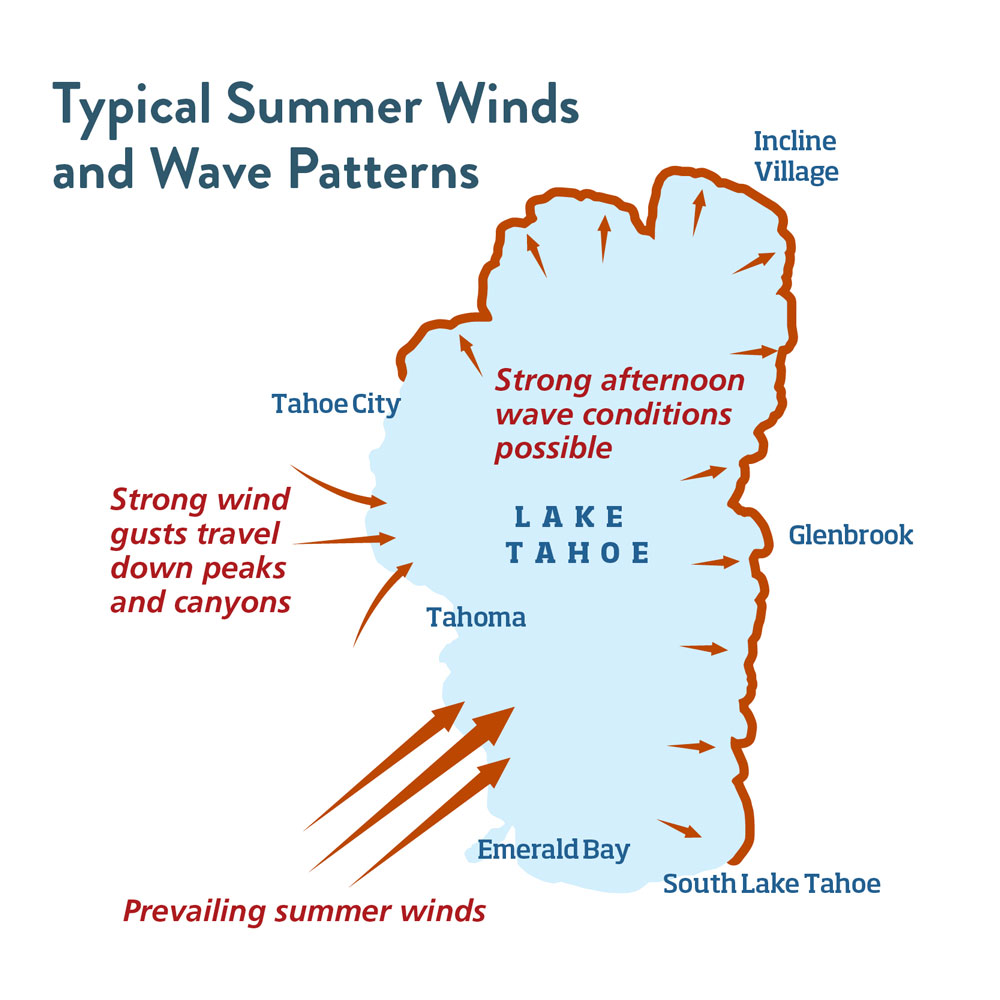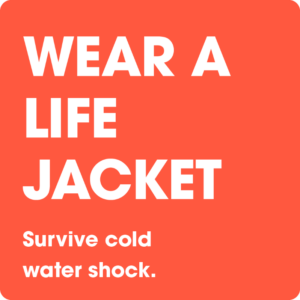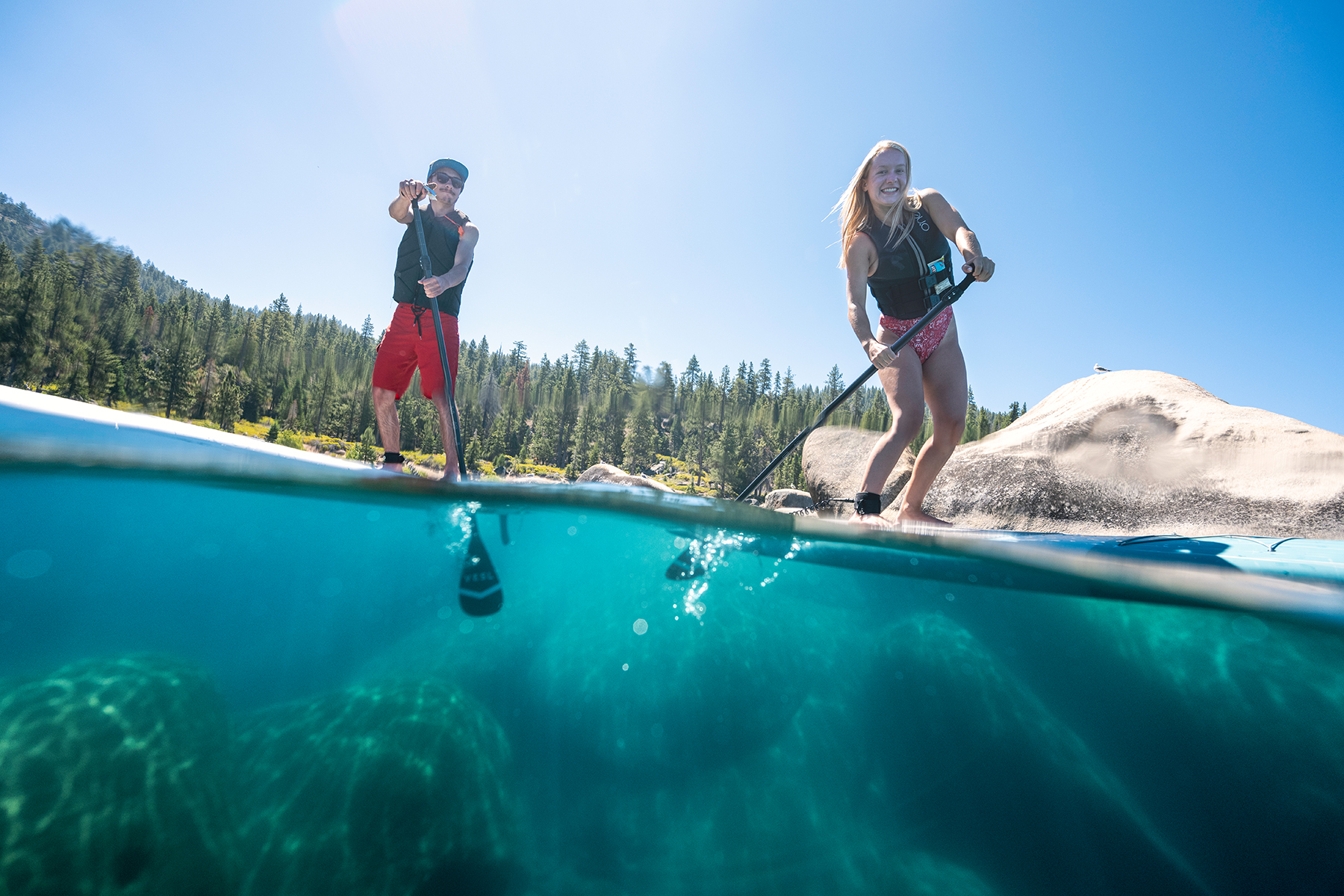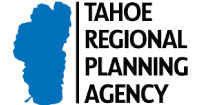Lake Tahoe Wind & Weather Conditions

Summer Wind Patterns
Be aware of the predominant increase in intensity of southwest winds during the afternoon, and be especially careful near the west side for down blasts coming off of steep mountain peaks and canyons at Baldwin Beach, Emerald Bay, Ward Canyon and the entire West Shore.
Summer winds are normally out of southwest when lake wind advisories are in effect. Paddlers should be aware that this means they could be blown offshore if paddling on the south and west shores leading to possible hypothermia, or worse, death. Paddlers on the east and north shores will need to be ready to deal with substantial waves. The chance for injury is quite high in these circumstances, i.e. crashing in the shore break, which is probably a daily experience along these shores when lake wind is in effect. Ironically, while much less likely chance of an injury there is much higher chance of a death due to being blown offshore along the west and south sides of the lake. Fortunately, many of these potential accidents are avoided due to good Samaritan folks in motorized watercraft. Thank you all boaters.
Fall, Winter & Spring Wind Patterns
While it can be T-shirt weather in the heart of winter, be aware. At some point during the fall, winter and spring the east and northeast wind will probably begin to blow on any given day. Air temperature will drop precipitously especial during winter. The chance of cold shock increases, which is partly influenced by the difference between water and air temperature. The threat of hypothermia is reason enough to consider wearing a life jacket even if you are an excellent swimmer. Your safest bet is to dress for water temperature. At a minimum carry a dry change of clothes in a dry bag, stay close to shore and wear your life jacket. Your life jacket is basically a super insulated vest, and can keep you warm.
Lake Tahoe Conditions
Explore Lake Tahoe real-time conditions for water temperature and wave height from the UC Davis TERC lake data stations. Data are updated every hour.
Alcohol on the Water – Doesn’t Mix with Safe Paddling
While some locations may allow alcoholic beverages near the water, very few allow people to drink and operate a boat, jet ski, or any other type of watercraft at the same time and with good reason. Alcohol impairs judgment and slows reaction time, which could create a tragic opportunity for an accident to occur. Keep yourself and others safe and don’t mix the two activities.
Learn Skills Before You Are in Trouble
PADDLERS ARE BOATERS TOO
It is important to take the time to learn rescue techniques such as CPR. If something goes wrong, knowing the right way to save a drowning victim can literally be the difference between life and death. Consider taking a paddle and water safety clinic from one of our Tahoe Paddle Shop and Outfitters.
Visit www.BoatCalifornia.com for California Boating laws and safety requirements, and www.ndow.org/boat for Nevada boating laws and safety requirements.
It’s easy and will save your life!













